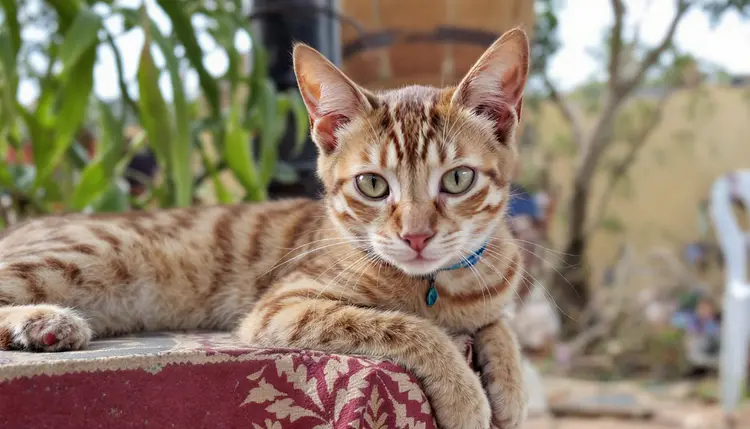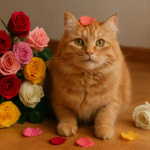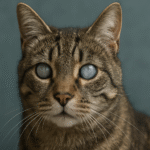Do you ever notice your cat obsessively grooming their belly and legs? It’s time to take action! Cats shouldn’t spend excessive time licking the same areas. It’s not just their way of staying clean. Your cat’s over-grooming could be their way of telling you something’s wrong. Let’s get curious about our feline friends’ grooming habits and ensure they’re purring with contentment.
Invest in your cat’s well-being with a few simple steps. Keep an eye on grooming patterns. Repeated licking might be a sign of stress, allergies, or even a skin condition. You wouldn’t want to ignore their cries for help, hidden under that constant lick. Your cat deserves better! Take the proactive approach and save them from unnecessary discomfort by identifying the source of their over-grooming.
Take note: a cat’s coat is a key indicator of its health. You’d do anything to keep their coat soft, sleek, and shiny, right? Over-grooming can lead to bald patches, scabs, or skin infections. Don’t wait for that fur loss to escalate. Address the anxiety or the sensitivity causing your cat’s excessive grooming. Your friendly feline’s luxurious fur is a testament to their overall health and happiness.
Enhance your cat’s life by altering their environment. Cats thrive on routine and love consistency. Has anything at home changed recently? A move, a new pet, or even rearranged furniture can throw them off balance. Reassure your cat with stability and comfort. Got multiple cats? Provide them with separate things like toys or litter boxes to lessen stress-induced over-grooming.
Why not try a new interactive toy? Mental stimulation combats anxious licking. Redirect their focus with puzzle toys or engaging laser light games. It’s heartbreaking to see them stress-lick instead of play! Grab a fancy feather teaser or a whirling electronic mouse and help their over-grooming become a thing of the past.
| Preview | Product | Price | |
|---|---|---|---|

|
Potaroma Cat Toys Flapping Bird (No Flying), Lifelike Sandpiper Chirp Tweet, Rechargeable Touch... | $14.24 | View on Amazon |
Your cuddly companion may be suffering from allergies. Their sensitive systems react to food, pollen, or even fleas. Choose the best hypoallergenic options for your cat. Test different foods and monitor if the grooming decreases. With a little patience, you’ll find the perfect diet, and your cat’s belly and legs will thank you for it.
It’s time to consult a veterinarian if the problem persists. Over-grooming might point to underlying health issues like hyperthyroidism or arthritis. You and your furry friend deserve peace of mind. A professional opinion can guide you towards recovery and comfort. Take control; your cat’s zesty zest for life is worth it.
Understanding Cat Grooming Behavior
Have you noticed your cat’s grooming habits might have taken an unusual turn? Understanding cat grooming behavior offers insights into their world. Watch your feline’s routine closely. It’s not merely about vanity. Their grooming reflects their well-being. They strive for cleanliness, and their innate need to remove insects is naturally embedded from their wild ancestors.
Make note of behavioral changes. Is your cat grooming more than usual? An increase can signal mental or physical distress. Cats use grooming as a soothing mechanism. If your pet’s overdoing it, delve deeper. Acknowledge their stress. They respond positively to love and reassurance. Creating a calm environment curtails anxiety-driven grooming.
Be aware of social grooming, too. Cats groom each other as a sign of friendship and trust. If your cat suddenly isolates or won’t groom another cat, it could indicate stress or illness. Use this behavior to your advantage; if they’re not social grooming, something’s likely wrong.
Avoid common misconceptions. Fluffy’s not just picky or spoiled. Over-grooming isn’t about vanity. They’re signaling for help. Direct your efforts at the root cause. Their environment or your routine may need adjustment. Remain vigilant and help them maintain their shiny, healthy coat.

Remember, a content cat is a healthy cat. Your cat will express gratitude through affectionate purrs and nuzzles. They depend on you to observe their grooming behavior.
With your care and attention, they’ll flourish and thrive.
Combating Stress in Cats
Soothe your feline’s nerves with effective measures. Stress isn’t just a human condition; cats experience it too. Our furry friends thrive on routine and predictability. Any disruption can trigger stress-induced over-grooming. Identify stressors. Too many changes? Noisy environment? Or not enough playtime?
Ensure they have a safe haven. A cozy spot or a dedicated room is essential. Cut down on chaotic environments. Positive reinforcement works wonders. Encourage calm with gentle words and soft strokes. Your kind gestures will ease them into a tranquil state.
Establish a routine that works for you both. Regular feeding and playtimes reduce anxiety. Your cat will appreciate knowing what’s next. Predictable schedules aren’t just practical; they’re crucial for their peace of mind.
Play’s also a game-changer! Physical activity isn’t merely exercise; it’s an antidote to anxiety. Invest in toys that stimulate and entertain. Cats long for mental zest. Ice cubes or cardboard boxes make excellent low-cost entertainment. They’ll be more interested in play than anxious grooming.
Reach for calming aids if needed. Pheromone diffusers and calming collars can do wonders. Consider them a hug in a bottle. Your cat deserves serenity, and you can provide society’s finest stress busters for their well-being.
The Role of Diet in Cat Over-Grooming
Putting the spotlight on nutrition can solve over-grooming issues. Your cat’s coat health shines under a nutritious diet! Allergies often exacerbate grooming. Determine the root allergy, whether it’s fish, wheat, or corn. Eliminate suspects and observe the difference.
Buy top-quality cat food. Read labels carefully. Opt for brands known for simple, wholesome ingredients. Sometimes less is more. Watch your cat blossom with a diet that suits them to a tee.
Consider supplements if allergies persist. Omega-3 fatty acids work like magic. They nourish your cat’s skin, reducing inflammation and, consequently, grooming. They demand minimal effort but produce maximum results.
Introduce dietary changes slowly and steadily, giving their system time to adjust. A gradual change prevents digestive upsets. Cats deserve the comfort of meals that cater to their sophisticated digestion and palate.
Hydration shouldn’t be overlooked. A dehydrated cat may over-groom, trying to soothe itchy, dry skin. Encourage them to drink by using cat water fountains. Proper hydration complements their diet and boosts overall health.
| Preview | Product | Price | |
|---|---|---|---|

|
Cat Water Fountain Stainless Steel: 108oz/3.2L Cat Fountain for Drinking- Pet Water Fountain Inside... | $34.99 | View on Amazon |
Professional Help: When to See a Vet
Sometimes, the best course of action is seeking professional help. Persistent over-grooming isn’t a matter to take lightly. Is your cat’s grooming preventing them from doing anything else? Or do you notice open wounds or hair loss? These are red flags demanding attention.
Reach out to your trusted vet. Veterinarians are well-equipped to diagnose underlying issues. They can verify if it’s behavioral, allergenic, or a more serious medical concern. Early professional intervention could save you and your cat much time and worry.
Prepare for your visit. Document your cat’s grooming habits. Has there been an increase in other unusual behaviors? Knowledge like this provides valuable insight for your vet. The more prepared the visit, the quicker the relief.
Consider the appointment a step toward peace of mind. It’s reassuring to know every effort is made for your pet’s health. Dismissing over-grooming might lead to bigger problems down the road. Take responsibility and grab expert advice.
Post-appointment, act on vet recommendations. Whether medication, diet adjustments, or behavioral therapies, proactive actions lead to healing. Treat the vet’s advice as a goldmine for your cat’s health. You’ll be turning problems into purrs in no time!





